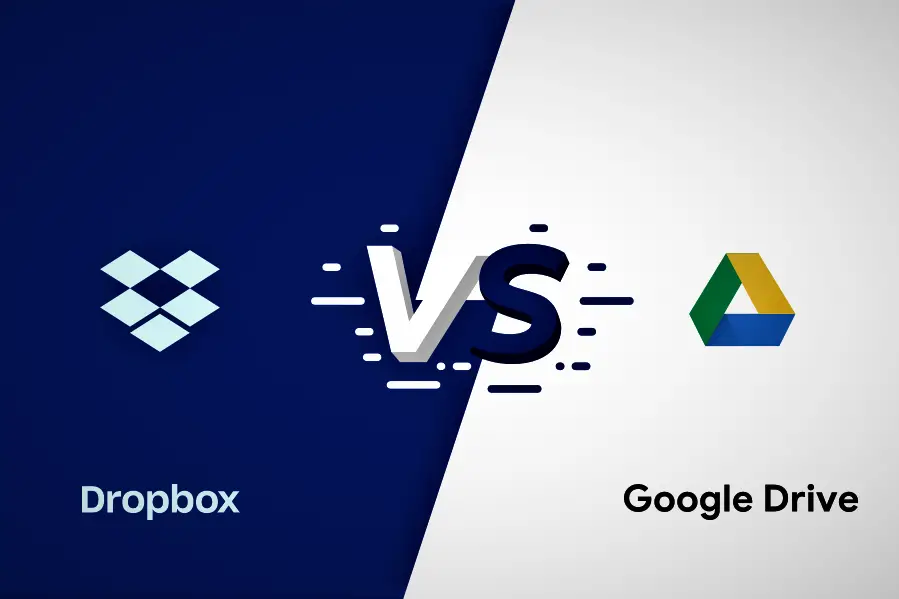Dropbox and Google Drive Which is Better are both powerful options. Google Drive and Dropbox both offer seamless integration with Google’s app ecosystem, while Dropbox boasts user-friendly simplicity and dependable file syncing. The choice between the two depends on the buyer’s preferences and specific requirements because both offer competitive pricing and security features.
Dropbox and Google Drive Which is Better have emerged as the leaders of the market among the plethora of cloud storage options available, each providing distinctive features and benefits. The strengths, weaknesses, and potential best match for your needs will all be thoroughly compared in this article for Dropbox and Google Drive.
User Interface and Ease of Use
One of the primary factors that determine the success of a cloud storage service is its user interface and ease of use. Dropbox has long been praised for its simplicity and straightforwardness. The interface is clean, intuitive, and easy to navigate, making it ideal for users who want a no-fuss experience. On the other hand, Google Drive is seamlessly integrated with Google’s suite of apps, offering a cohesive ecosystem for users already immersed in the Google ecosystem. This integration can be a significant advantage for those who heavily use Google Docs, Sheets, and other G Suite apps.
File Synchronization and Speed
When it comes to file synchronization, both services do an excellent job of keeping your files up to date across devices. However, Dropbox tends to have an edge in this department, as it usually offers faster sync times compared to Google Drive. Users who rely on real-time file updates may find Dropbox more efficient for their needs.
Collaboration and Sharing
Collaboration is a crucial aspect of cloud storage, particularly for businesses and teams. Google Drive shines in this area, offering robust collaboration tools that enable multiple users to edit documents simultaneously in real time. It also provides commenting and suggesting features, facilitating seamless collaboration on files. Dropbox also supports file sharing and collaboration but doesn’t match Google Drive’s level of integration and real-time co-editing capabilities.
Storage Space
Both Dropbox and Google Drive offer free storage space to start with. Google Drive provides a generous 15GB of free storage, whereas Dropbox offers a more modest 2GB. However, Dropbox compensates for this with referral bonuses and promotions that allow users to earn additional free space. For those with extensive storage needs, both services offer paid plans with various storage options.
Platform Compatibility
Both Dropbox and Google Drive support a wide range of platforms, including Windows, macOS, iOS, and Android. This cross-platform compatibility ensures that users can access their files from any device with an internet connection seamlessly.
Third-Party App Integrations
If you rely on various productivity and collaboration tools, Dropbox might be the better option. Dropbox has an extensive range of third-party app integrations, making it a versatile platform for different workflows and business needs. Google Drive also supports integrations with third-party apps, but its offerings might be more limited compared to Dropbox.
Security and Privacy
When it comes to the security of your data, both Dropbox and Google Drive employ encryption to protect your files during transmission and storage. They also offer two-factor authentication for an added layer of security. However, Google Drive has the advantage of being integrated into Google’s robust security ecosystem, leveraging the company’s expertise in this area.
File Size Limits
Dropbox allows you to upload files up to 50GB in size, making it suitable for larger files. Google Drive, on the other hand, supports files up to 5TB in size, which is more than sufficient for the average user.
Offline Access
Both Dropbox and Google Drive offer offline access to selected files. Users can mark specific files or folders for offline access, ensuring they can work on important documents even without an internet connection.
Backup and Versioning
Both services offer backup and versioning features. Dropbox retains file versions for 30 days for free accounts and unlimited time for paid users, while Google Drive keeps file versions for 30 days or 100 revisions, whichever comes first.
Conclusion
In conclusion, choosing between Dropbox and Google Drive depends on your specific needs and preferences. Dropbox is an excellent choice for those seeking simplicity, fast synchronization, and a wide range of third-party app integrations. On the other hand, Google Drive’s seamless integration with Google’s apps and robust collaboration features make it a top choice for users heavily invested in the Google ecosystem. Ultimately, both services provide reliable cloud storage solutions, and you can’t go wrong with either one. Assess your requirements, weigh the pros and cons, and make an informed decision based on what aligns best with your workflow and preferences.
FAQs:
Which service offers more free storage?
Dropbox provides 2GB of free storage, whereas Google Drive offers 15GB for free.
Is file synchronization instantaneous on both platforms?
Dropbox offers faster sync times compared to Google Drive in most cases.
Can I edit documents online with Dropbox and Google Drive?
Yes, both services support online document editing with their respective office suites.
Which platform has better collaboration tools?
Google Drive excels in collaboration, allowing real-time editing and comments on shared files.
Are my files safe and secure in the cloud?
Both services use encryption to protect your data, but Google Drive’s integration with Google’s security features adds an extra layer of protection.
Can I access my files offline?
Yes, both platforms allow you to access selected files offline.
What platforms are supported by Dropbox and Google Drive?
Both services support Windows, macOS, iOS, and Android, ensuring cross-platform accessibility.
Does Dropbox or Google Drive offer better third-party app integrations?
Dropbox has a more extensive range of third-party app integrations, making it more versatile for different workflows.
Is there a maximum file size limit?
Dropbox allows you to upload files up to 50GB, while Google Drive supports up to 5TB.
Do Dropbox and Google Drive offer backup and versioning features?
Yes, both services provide file versioning and recovery options for added peace of mind.
